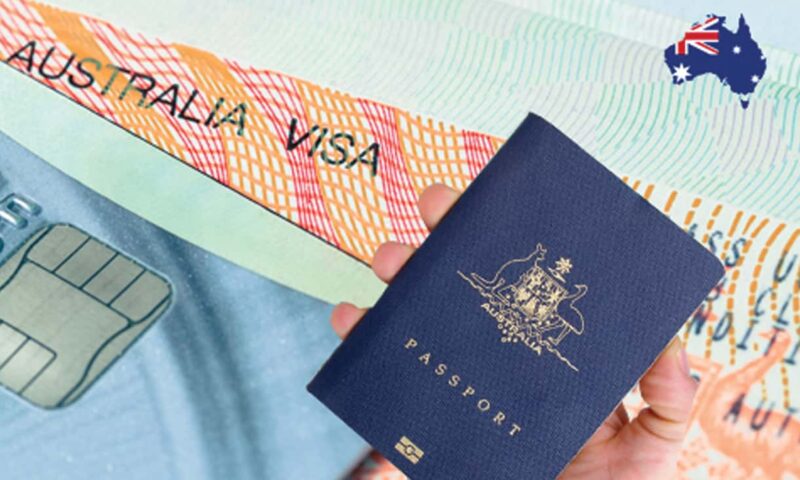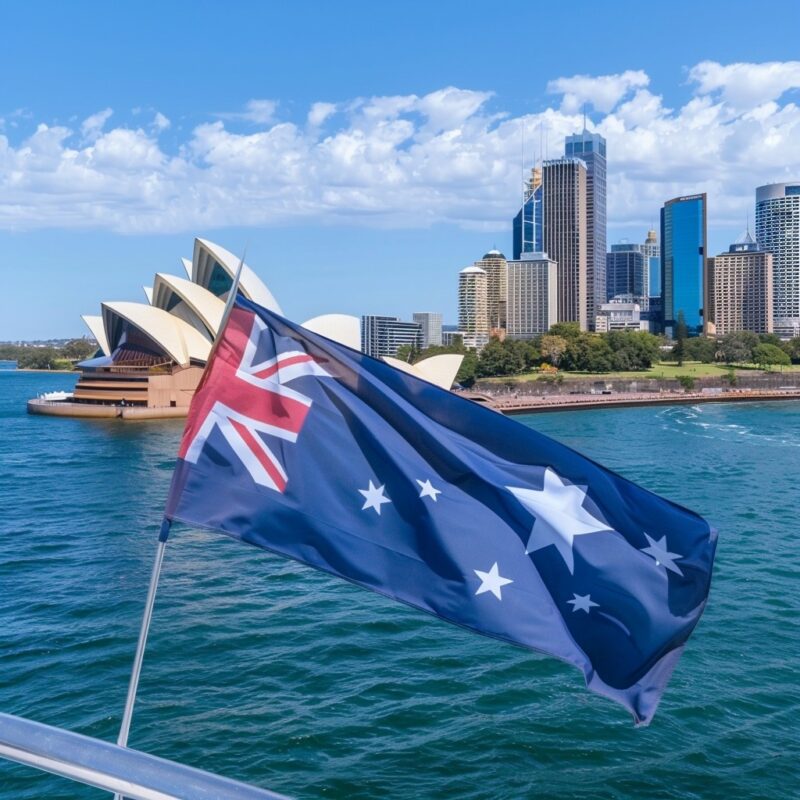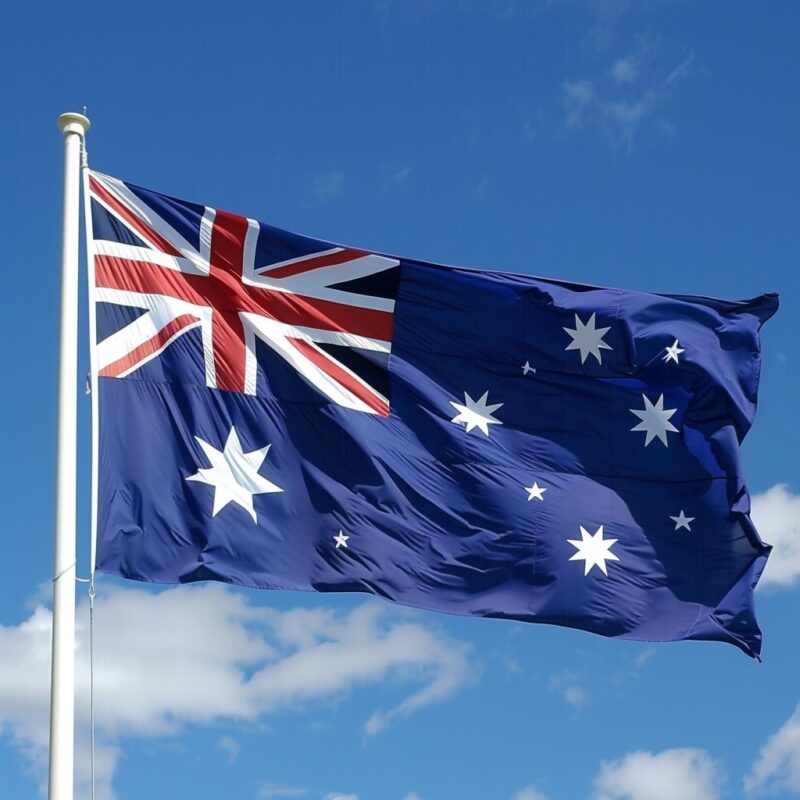Many wish to move to another country for a wide array of reasons. While some are just interested in having a different experience from the one they are used to, others seek better financial conditions so they can make progress.
Australia was always one of the hottest destinations for those who are looking for a change, even for people from the United States. Let us go through the visa options Americans can opt for when moving to Australia.
Short-Term Visas
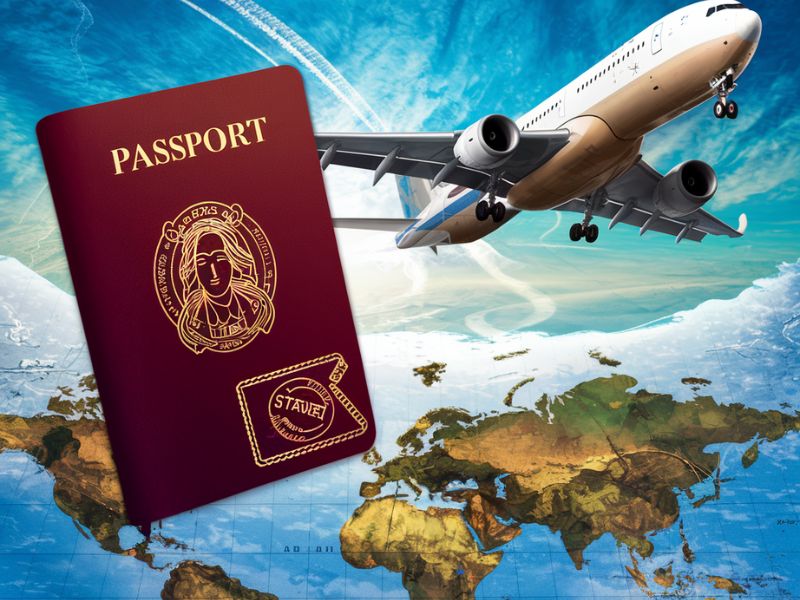
For Americans eyeing a temporary stay in Australia, whether for tourism, a short business trip, or visiting family, short-term visas offer a straightforward pathway. The most common is the Tourist Visa (600)[1.1], which allows visitors to enter Australia.
It’s available for three, six, or twelve months, but it’s important to note that working on this visa is prohibited, and studying is limited to three months. Another popular option is the Working Holiday Visa (Subclass 462)[1.2], made for younger Americans aged 18–30 looking to experience life in Australia while having the ability to work to fund their travels.
This visa is a fantastic opportunity to introduce yourself to Australian culture, with the flexibility to work for up to six months with any one employer and the chance to study for four months.
Applicants must prove financial sufficiency and meet health and character requirements, ensuring they can support themselves and not pose a risk to the Australian community.
Student Visas
Pursuing education in Australia is a dream for many, thanks to its renowned universities and a range of study options. The Student Visa (Subclass 500)[1.3] is the key to unlocking this opportunity, allowing Americans to undertake a full-time course in the country.
Applicants must be enrolled in a course registered on the Commonwealth Register of Institutions and Courses for Overseas Students[2] and prove they have the financial capacity to cover tuition fees, living expenses, and return airfare.
Holding a student visa also allows part-time work, making it easier to manage living costs while gaining an internationally recognized qualification.
Work Visas

For those looking to advance their careers, Australia’s dynamic job market and need for skilled professionals offer a wealth of opportunities. The Temporary Skill Shortage Visa (Subclass 482)[1.4] allows American professionals to live and work in Australia if sponsored by an Australian employer.
This visa requires applicants to have the necessary skills for the nominated position and meet English language requirements. The Skilled Independent Visa (Subclass 189)[1.5] is ideal for skilled workers who do not have an employer’s sponsorship but possess skills in demand in Australia.
It’s a points-tested visa, with points awarded for age, English proficiency, work experience, and education. This visa grants permanent residency, allowing holders to live and work in Australia indefinitely. For those with a job offer from an Australian company, the Employer Nomination Scheme (Subclass 186)[1.6] offers a permanent move to Australia.
Applicants must be nominated by their employer and possess the skills and qualifications required for the position, alongside meeting English language and health checks.
Family and Partner Visas
Family connections can also provide a pathway to living in Australia. The Partner Visa (Subclasses 820 and 801)[1.7] allows Americans who are spouses or de facto partners of Australian citizens, permanent residents, or eligible New Zealand citizens to live in Australia.
This visa involves a two-stage process, starting with a temporary visa before moving to permanent residency. For parents of Australian citizens or permanent residents, the Parent Visa[1.8] enables a reunion with family in Australia. These visas can be temporary or permanent, depending on the applicant’s needs and circumstances.
Applying for a Visa
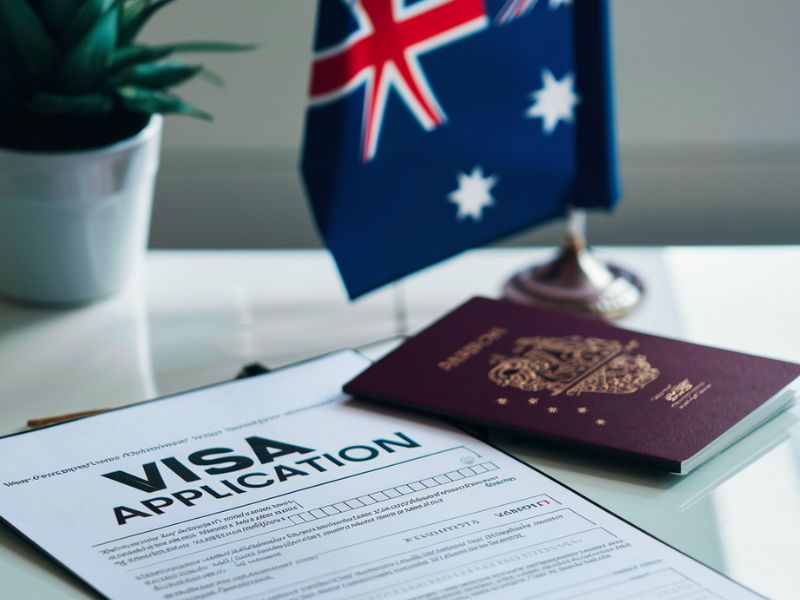
The application process typically involves gathering necessary documents, such as a valid U.S. passport, proof of finances, and any required health or character certificates. Most visa applications can be submitted online through the Australian Department of Home Affairs website, streamlining the process.
After submitting the application and paying the required fee, applicants enter a waiting period while their application is processed. This duration varies depending on the visa type and the volume of applications being handled.
While waiting for visa approval, use the time to make a plan for moving to Australia.
In 2021, there were 1,639,000 temporary visa holders in Australia, made up of 1,613,500 temporary residents, according to Australian Bureau of Statistics.[3]
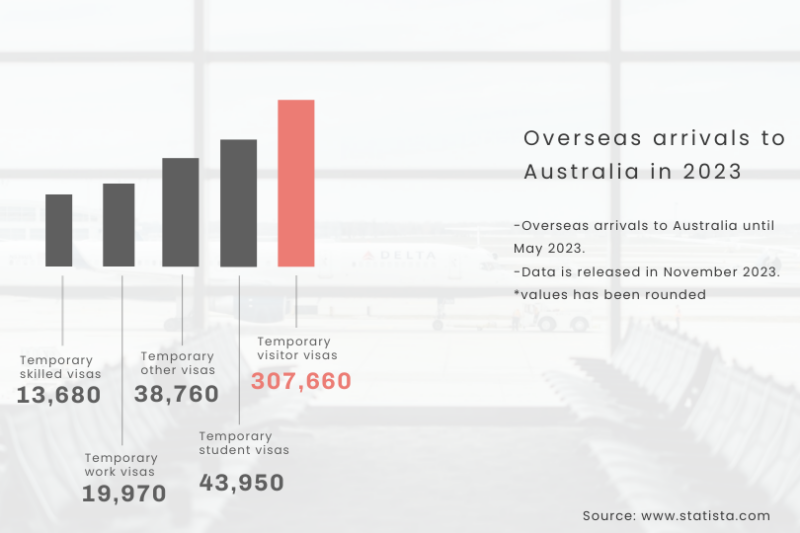
Some applicants may be asked to provide additional information or undergo medical examinations. For those applying for an Electronic Travel Authority (ETA)[1.9] for short visits, the process is even more streamlined, with instant approvals in most cases. The ETA is electronically linked to your passport, eliminating the need for a physical visa label.
References:
- 1. Immi.homeaffairs.gov.au
- 1.1 – immi.homeaffairs.gov.au – Subclass 600
- 1.2 – immi.homeaffairs.gov.au – Subclass 462
- 1.3 – immi.homeaffairs.gov.au – Subclass 500
- 1.4 – immi.homeaffairs.gov.au – Subclass 482
- 1.5 – immi.homeaffairs.gov.au – Subclass 189
- 1.6 – immi.homeaffairs.gov.au – Subclass 186
- 1.7 – immi.homeaffairs.gov.au – Subclasses 820 and 801
- 1.8 – immi.homeaffairs.gov.au – Subclass 103
- 1.9 – immi.homeaffairs.gov.au – Subclass 601
- 2. Cricos.education.gov.au
- 3. Abs.gov.au – Temporary visa holders in Australia
My name is Callum Anderson and I’m a freelance journalist and travel enthusiast who visited more than 50 countries in the last 10 years. My experience in obtaining documents for visiting different countries is immeasurable and I would like share it with as many people as possible.
Related Posts:
- Work Culture in Australia: 13 Things What Americans…
- Moving to Australia from the UK: A Beginner's Guide
- Investment Requirements Soar for Greek Golden Visa…
- South Africa Enacts Law for Digital Nomad Visa…
- Europe in 2024: A New Visa Requirement for US…
- Why People Move to Australia: 10 Reasons Behind Relocation

